The Notefinder
This is a very powerful exercise to start you off towards knowing the notes on the fretboard. I have covered this exercise in the Cycle videos as well, but based on some questions I have gotten, I decided to go over it again, nice and slow. It is all about the magical numbers of 5 and 7!
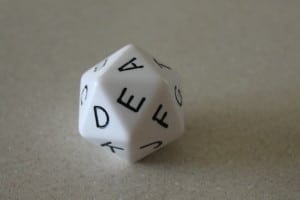
If you’d like to study with me, click here.
Transcript:
You may already have noticed that between two strings [playing: 0.18], there’s always an offset of either five frets or seven frets. Now remember those numbers because they’re very very handy.
[playing: 0.26 to 0.28] Fifth fret on my E string gives me the same note as the next string up as an [playing: 0.32] open string. So these [playing: 0.32 to 0.34] two strings are offset [playing: 0.36] five frets from each other. Now if I reverse this, meaning I finger the note E on the A string, that is the same note, E, as the [playing: 0.43 to 0.44] low open E string on the seventh fret of the [playing: 0.45] A string, meaning I’m fingering an E on the A string, on the seventh fret. So, [playing: 0.52] seventh fret on A, go on the other way [playing: 0.55 to 0.56] gives me the open E string. Five and seven are extremely important numbers.
If I try to find one and the same note all over the bass, there is a great exercise that you can do. I recommend it so much that I make it a must do for my students for quite a while! It is a great way to get a head start on figuring out the fret board.
So here is how it works.
Let’s say we are going to find the note G. You have to be diligent and follow instructions precisely and use a metronome, very important. I’m going to demonstrate how this works.
The idea is to find the note G on all [playing: 1.37 to 1.40] four strings. I’m just going to demonstrate this as if it were a fourth string. So, we find it on the E string, G is on the third fret: [playing: 1.47] third fret, E-string. Then I’m adding seven, and that’s three plus seven [playing : 1.54] makes ten, so that puts me up here on the [playing: 1.57] tenth fret of the A-string. Okay, so I just went “plus seven” from one string to the next. Let’s do that again, let’s see what happens.
If I [playing: 2.03] again add seven, I’m ending up on fret number [playing: 2.07] fifteen. That’s a G, right? But now I’m going to make an additional rule: for the purpose of this exercise, you have to stay below the double dots. Staying below the double dots – this means [playing: 2.20] I have to take this note on the 17th fret down twelve frets. So [playing: 2.23] if I take this down twelve frets, I’m ending up on fret [playing: 2.27] five. Again, I came from the [playing: 2.29] tenth fret to either the [playing: 2.31 to 2.32] seventeenth fret minus twelve – [playing 2.34 to 2.35], ie fifth fret. We’re still doing the G’s right. So [playing: 2.38 to 2.39] ten minus five, there’s the five. So plus seven or minus five gives me the same note on a different string.
Now, this is an interesting scenario because I am on the [playing: 2.57] fifth fret and I can go either way and still stay below the double dots, which is the rule (I mean for myself for this exercise: just stay down here because up there, everything repeats anyway).
So I am on the fifth fret, [playing: 2.58 to 2.59] five minus five is zero. [playing: 3.00 to 3.01] That’s a G, right? [playing: 3.02 to 3.04 ] Five plus seven is twelve, that’s a G, right?
So what does the exercise look like? As always, if we cannot do it in time, we cannot do it. And we need a little bit of help for that. Put the metronome on, it will keep you honest. Because this is what will likely happen: You are going to go [playing: 3.19 to 3.23] “G, I’m cruising G…. I know this”.
You don’t, unless you put on the metronome and stay honest and true to the click, you don’t. Now, you are allowed to set the click to a very slow tempo. I think I said that in an earlier bit. Do not set it to a glacial tempo where you don’t really get a sense of a groove – this is great for other exercises but not for this one. For this one, I want you to get a sense of a groove so set it to a tempo that’s nicely moving; something like seventy or so, and then let two beats… or three beats… or even four beats go by, if you need to.
My exercise might look like this: [playing: 3.55 to 4.08] G *tick *tick *tick, G… and while this is happening, you think ahead where you need to go next. That is crucial because that is a skill that happens in music just the same. And by the way, when I get to the top, I do not double up. You go up, you go right back down. Also, do not skip strings. This [playing: 4.18 to 4.19] is cheating. Of course, [playing: 4.20] you know that that’s an octave. That’s got to be another G. But you are allowed to make a mental note while you’re down here [playing: 4.24] saying “Okay, I will get to the last string and my note is going to be right there.” You can do that.
Okay, so I have a dice. My friend, Sonya Jason gave me that dice; it has twelve sides and it has the note names of all twelve notes on it. So throw the dice, whatever note it lands to, that’s your note for the day. Let’s say the dice says Bb. Okay, so I’m going to play my Bb, set my metronome. So here we go:
[playing: 4.53 to 5.13] to Bb – Bb – Bb – Bb… and all these numbers should be either five or seven frets apart. Let’s see if that’s true. Six minus five is one… plus seven is eight… minus five, three. So there you go, it’s always a distance of five or seven frets. Now if the click keeps going and you feel like [playing: 5.17 to 5.21], “No, I don’t need this beat in between. I can cruise this.” Go ahead.
[playing: 5.24 to 5.35] Bb – Bb – Bb – Bb. Now I am doing one a click, right. Good for you. Now if you’re starting to get really good at that and feeling good about it, double up the tempo. Do two notes per click. That’s all you have to do. You’ve done it for one round of a note.
Extremely powerful exercises. Again, always do it in time. And this distance of five or seven notes is really a distance you want to get into your muscle memory. There is also a variation of this exercise in the book where you will be doing this blind, without looking. Takes a minute but it pays off. So check it out. I highly recommend this exercise. Go for it!
I use Marleaux Basses and Dean Markley Strings
Thanks to Wolftrackaudio.com for audio post production.

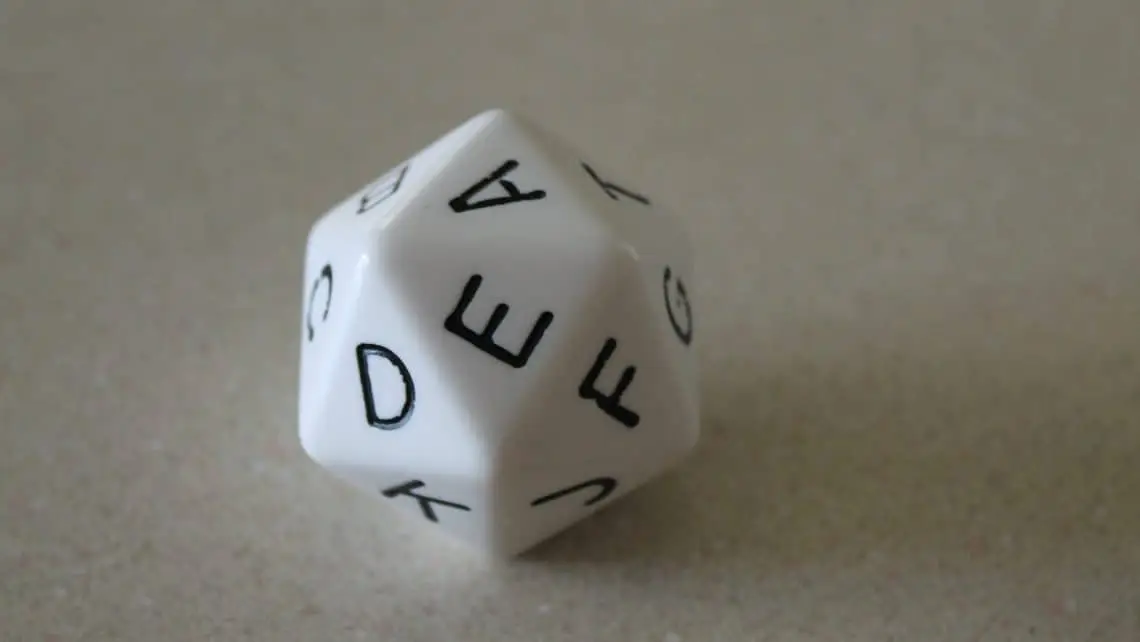

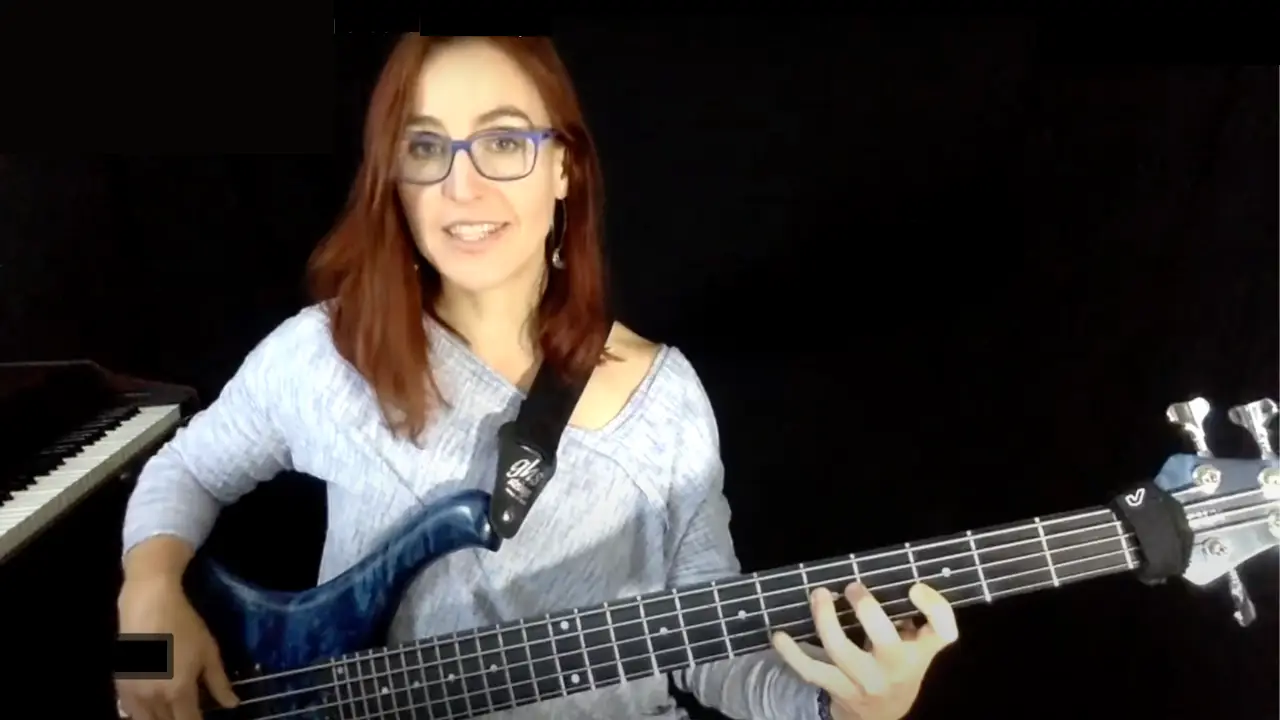

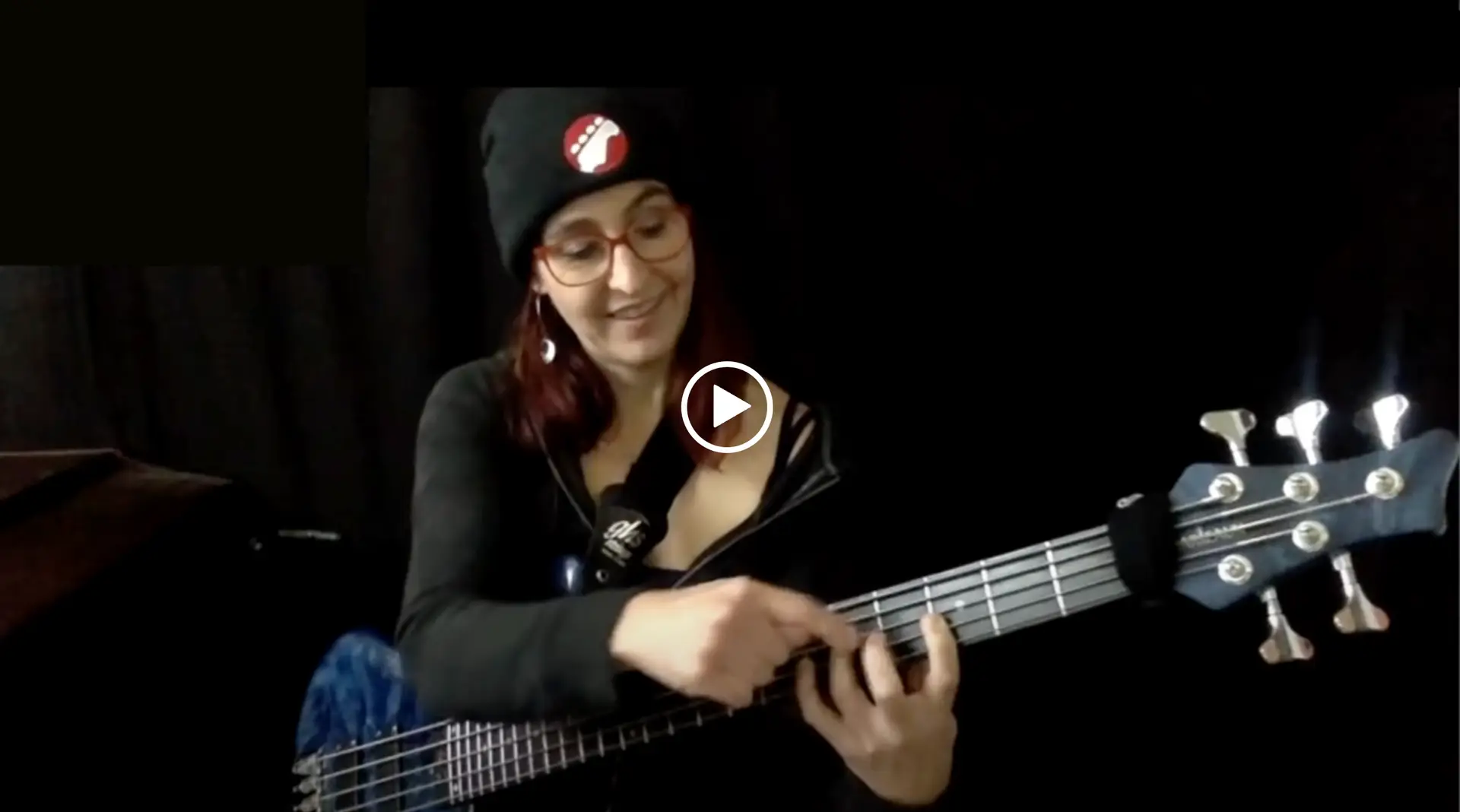
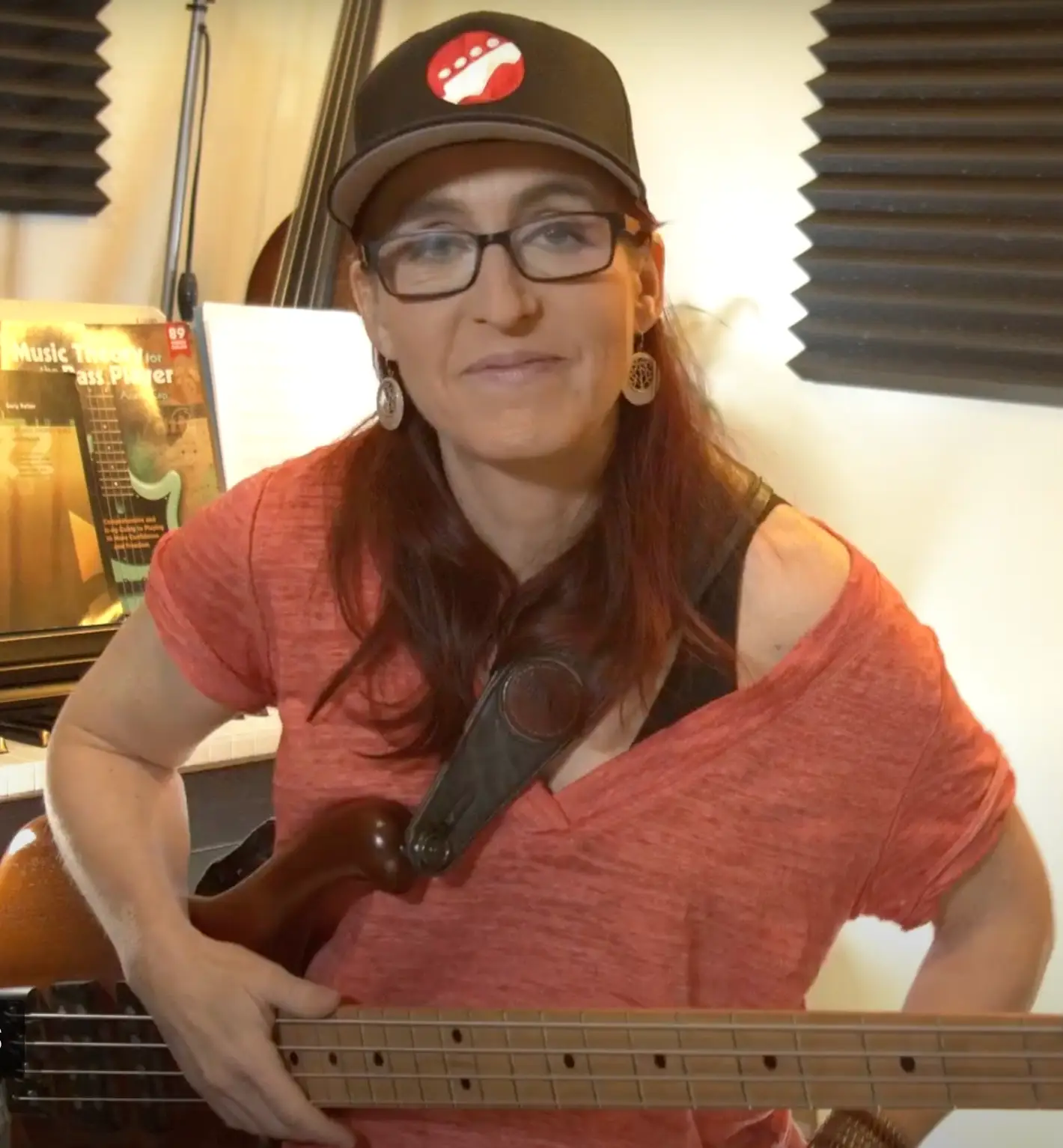
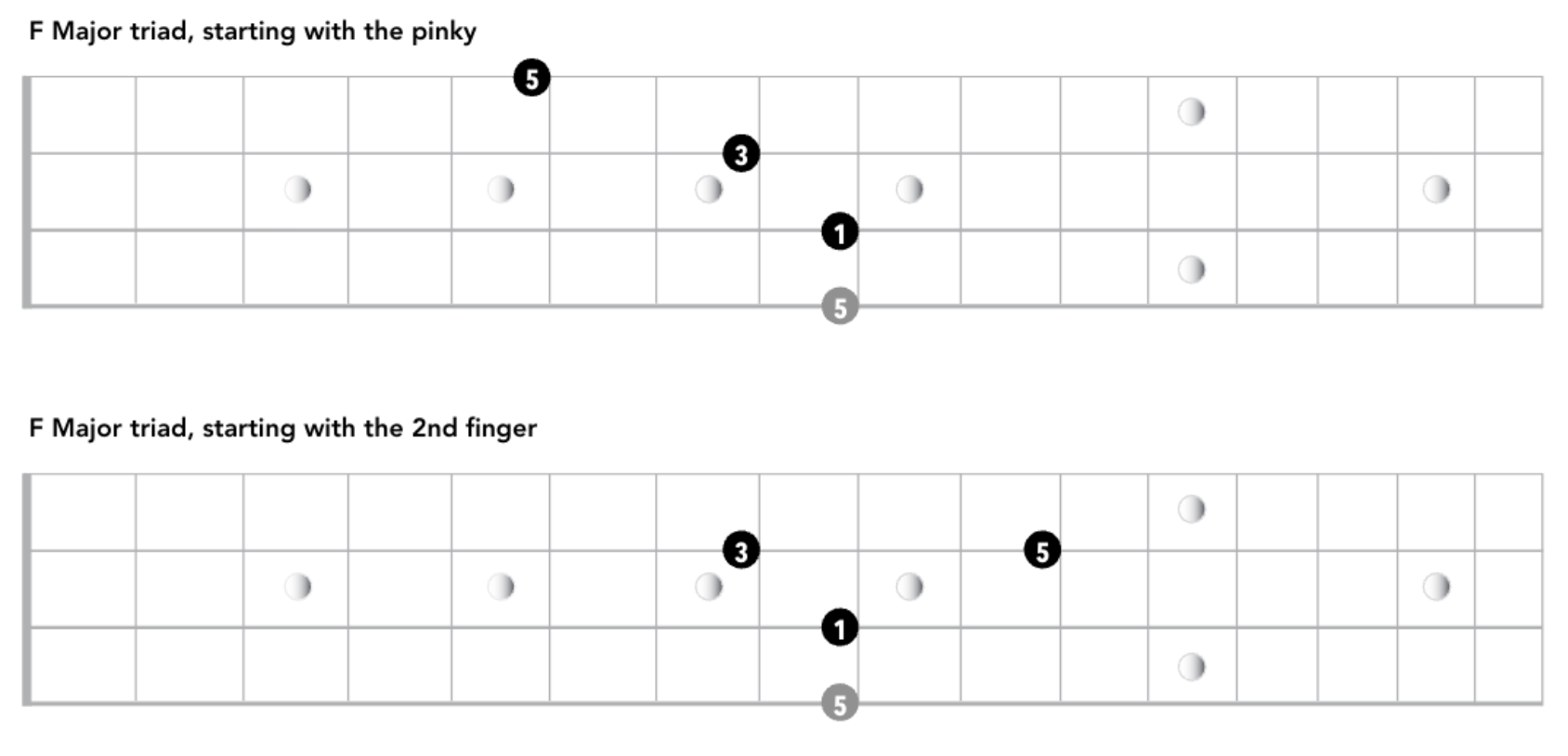
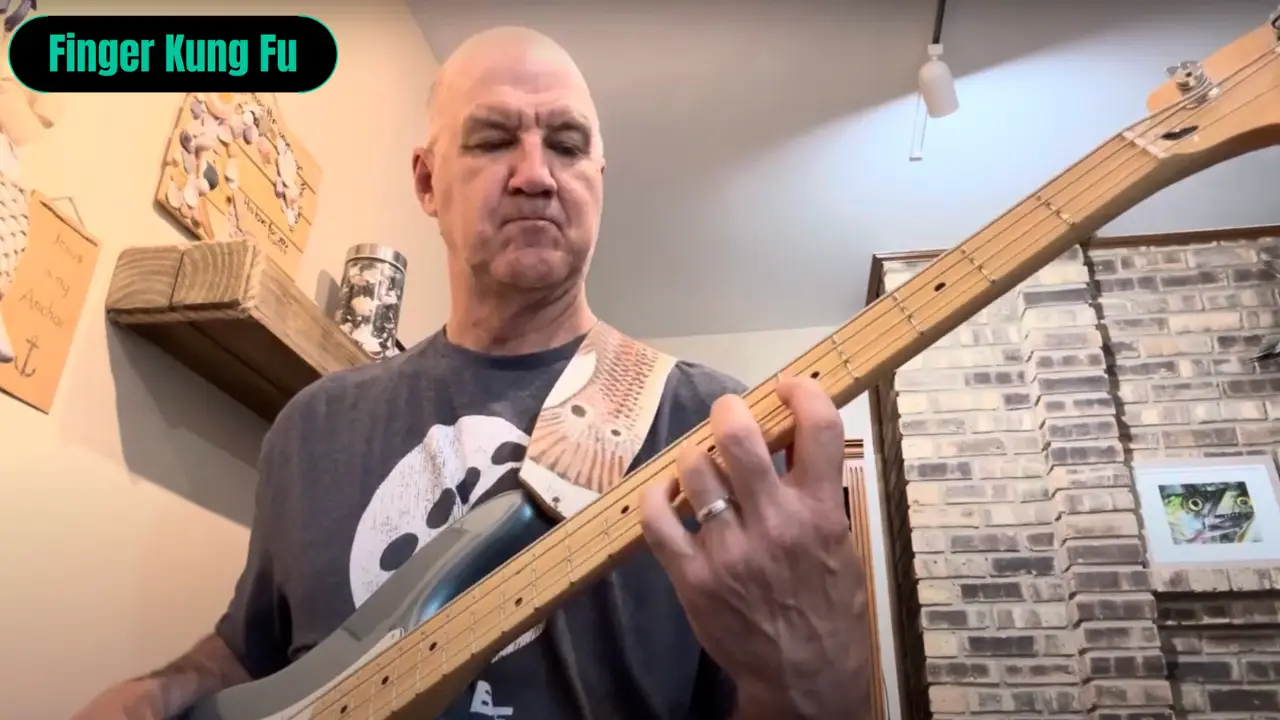
11 Replies to “Bass Bit 4: Free Lesson on Notes: The Notefinder (BB #4)”
I enjoyed this little lesson, and was surprised at how helpful it was–something I think maybe I realized intuitively but no one had ever demonstrated to me the way that you did. Immediately went into practice. Thank you! By the way, after looking for the music dice online and only finding a set of 12 for $18, I found this web app that will pick a random note for you (get a new note by clicking the note displayed): http://random.bretpimentel.com . Seems to work on smartphones, too. Also found a web-based metronome here: http://a.bestmetronome.com. Just got your book the other day and look forward to working my way through.
Hi JZ, cool, glad it’s helpful! Cool resources you list there, cool note picker! I like that you can select the note names – will come in handy later when we may want scale roots for major and minor keys. Nice!! Thank you!
I like bassguitar lessons.
Happy practicing! 🙂
My copy of Music Theory for the Bass Player is supposed to arrive today!
But, I have already started watching your Bass Bits. I have an app on my iPad that I like to use when practicing and it is also a good candidate for the Note Finder excercise. It’s called Chordbot (http://chordbot.com). You can arrange chord progressions and select a style of background music and loop through it. And in the drum tracks there are a number of metronome selections. Perfect for practicing. As for the Not Finder Excercise I go into the transpose setting and choose one at random (+2, +3, +4, -1, -5 etc.). So, that is like mice dice – random transpose selection.
Just thought I would share.
Oh, there were some typos in there. Oh well.
Just a note – for the Note Finder Exercise of course I create a “song” with just one chord, not a progression or multiple sections. 🙂
Great and creative ideas!! Thanks for sharing!
Hi Ari, can you recommend additional exercises in you “Music Theory for the Bass Player” book designed to facilitate knowing notes on the neck? Right now, I like and use “The Cycle as a Practice Tool” on page 109. Any others?
Thank you!
George
The Notefinder (p.12) and the Notefinder blindfolded (p13 I think) are great. Also, naeme-a-dot on p 14. There are videos here for all of these. Reading is another, if you read notes (working on material to help with that). You can expand all these exercises by not just moving one note (either through the cycle as you are doing or string by string as in the notefinder) by not just playing one note, but a whole phrase and moving that around. Say the note names as you do that! And then there is the Pattern System, a book/course I am working on at the moment.
Loving the book and the exercises!
Note Finder Exercise p.13 says to check out later chapters for the best fingering with this exercise, but I could not find them and am afraid to teach myself a bad habit. Is the concept at this point better to focus on or the technique?
Hi RJ, thank you for your comment! Here is what I recommend: Read Chapter 12 (Technique), then return to beginning and focus on the concept. Keep dipping in and out of Chapter 12 and the exercises there regularly and you will avoid bad habits. I also recommend you check out my “talking Technique” series at notreble.com Holler if you run into questions